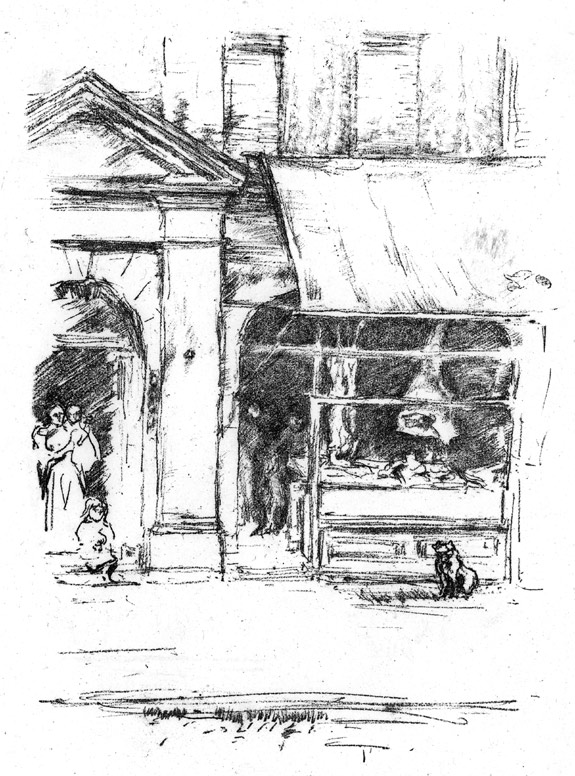|
JAMES McNEILL WHISTLER
(Lowell, Massachusetts 1834 – 1903 London)
The Butcher’s Dog

The Butcher’s Dog
Ref: Spink 166 iv/iv; Levy 128; Way 182
180 x 130 mm
Lithograph, 1896.
The stone signed with the ‘butterfly’ * signature.
From the posthumous edition of 30, printed in January 1904 for Whistler’s
executrix before the stone was cancelled (preceded by 21 lifetime proofs).
£1500
*Whistler's monogram 'J.W.' was developed into a 'butterfly' signature in
c.1869 and gradually evolved over the next thirty years.
To view a higher resolution version of this print, please click this link: The Butcher's Dog
|
Additional
Information about the Print
Whistler made etchings throughout his career but turned to lithography much
more spasmodically.
He was particularly active as a lithographer in the 1890’s,
having a show of 75 lithographs at the Fine Art Society in London in 1895.
A scene in Cleveland Street, Fitzrovia, close to Whistler’s then studio at
8 Fitzroy Street.
Artists’ lithography is a planographic technique, much more recent
in origin than engraving and etching.
It was invented at the close of
the 18th century (by Alois Senefelder) and was not much used by artists
for original printmaking till the later 19th century.
The process is based on the non-compatibility of water and grease.
Traditionally the artist draws on a limestone block with a greasy crayon,
which sinks into the porous stone.
Nitric acid mixed in water with gum Arabic is applied to the stone to
increase the porosity of the areas not drawn upon.
For printing the stone is moistened with a sponge, the water adhering
to the bare stone, but not to the greasy drawing. The stone is then inked,
the ink being repelled by the surface water on the blank areas and only
adhering to the drawing.
Senefelder also invented a special press for
printing lithographic stones.
Dampened paper is laid over the prepared stone and the image is transferred
as the stone is moved laterally beneath a rubber scraper.
Whistler drew his lithographic subjects on much more portable thin
lithographic transfer paper which his printer Thomas Way transferred
to the heavy lithographic stones and printed for him.
The soft chalky quality of the line reflects the texture of the lithographic crayon
with which Whistler drew the image.
For more information, and further examples of lithographs and other Planographic forms of printmaking, please explore the Lithography page in the Techniques section of this website.
|